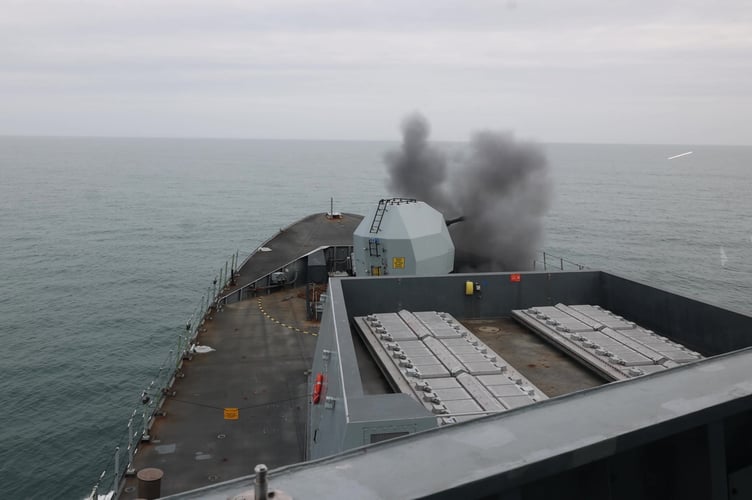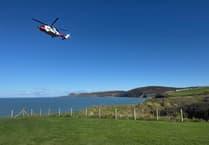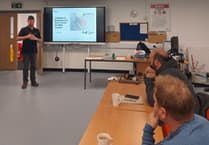A group of campaigners are 'demanding the demilitarisation' of west Wales, claiming people don't want drones tested in Cardigan Bay.
West Wales Against Arms is taking aim at West Wales Airport and other sites around Aberporth, which are some of the biggest employers in the county, developing drone technology.
WWAA say they speak on behalf of the residents of west Wales who 'will not accept weapons of war and death being developed and tested in our communities' and do so 'in solidarity with Palestine'.

Ian Hicks from the group said: "West Wales Airport in Aberporth has become an international centre for the testing of weapons of war and surveillance technologies.
"This development has raised significant concerns among local citizens regarding the militarisation of the area and its impact on our community.
"The airspace that WWA, now owned by Portuguese-run drone and AI-systems company Tekever, offers has been stated as being ‘crucial to the advancement of military drone technology in the UK.’
"QinetiQ have been issued at least nine licences by the UK government to sell its weapons technology to Israel, the most recent for £14 million.
.jpg?trim=0,3,0,0&width=752&height=500&crop=752:500)
"We, the residents of West Wales, do not want our skies used to test technology that helps Israel commit genocide.
"We demand the demilitarisation of West Wales and the development of peaceful, sustainable enterprises to provide education, employment, health, and fulfilment for all."
Military technology has been tested at Aberporth since the Second World War with the Qinetiq site in Parcllyn, formerly the RAE, employing around 200 people.
The Cardigan Bay danger area provides a secure military testing and training area, with activities including low flying aircraft, missile evaluation, laser firing and bombing.

The danger area in the bay was established during the Second World War and covers 6,500 square kilometres of Cardigan Bay from sea level to unlimited height.
Tekever at Parc Aberporth currently employs around 50 people and is set to expand in the coming years.
Speaking to the BBC earlier this year, Ceredigion Cabinet member for economy and local councillor Clive Davies who said an expansion of defence jobs in the area could create new opportunities for young people and help move away from tourism and the public sector.
"This area has a unique selling point in terms of the bay," he said.
"It's been used for testing this kind of equipment for a long time, drones and other forms of equipment.
"The economy here would benefit greatly, if it comes with hundreds of jobs to provide high level, skilled jobs, in science and mechanical engineering."

Campaigners are set to hold a public meeting in Cardigan Guildhall this Saturday, 27 September from 1pm.
Their last meeting drew around 70 people the group says.
Ian Hicks added: "The meeting will focus on organising and planning upcoming campaigns, activities, and actions aimed at opposing the presence and operations of weapons manufacturers at key local sites, including West Wales Airport (WWA), QinetiQ-run MOD Aberporth, and Parc Aberporth.
"A core aspect of the meeting will be fostering collaboration among participants and encouraging group decision-making to ensure that all voices are heard, and collective action is taken.”





Comments
This article has no comments yet. Be the first to leave a comment.